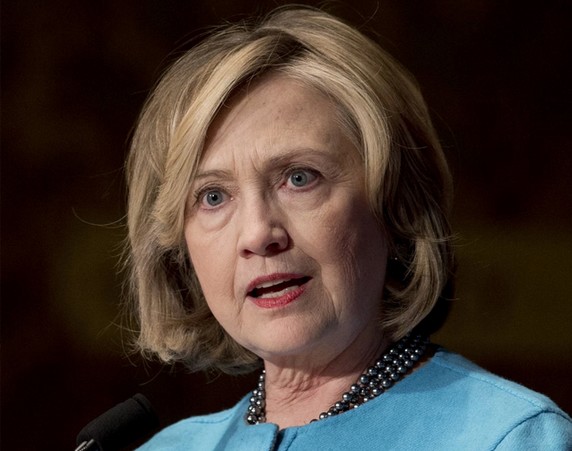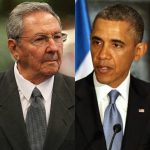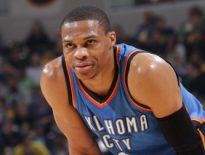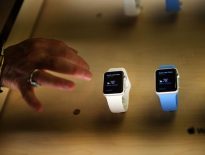WASHINGTON — Around Christmas, Hillary Rodham Clinton set off on her annual holiday vacation at Oscar de la Renta’s beachfront estate in the Dominican Republic.

It was a somber and serious time for Clinton. De la Renta, whose relationship with the former first lady had blossomed from dress designer to close friend, had recently died and Clinton wanted to be there to support his widow. She was also wrestling with a final decision on whether to run for president. She arrived at the island compound armed with a binder stuffed with 500 pages of policy memos and analysis.
Clinton had spent nearly two years tiptoeing around a decision that much of the political world assumed was a done deal, a calculated next act in what critics saw as the Clintons’ master plan.
Clinton’s intensely loyal friends and advisers bristle at the suggestion that a second White House run was inevitable. When she left the State Department in early 2013 and returned to private life for the first time in more than two decades, Clinton told people she just wanted to “walk, sleep and eat.” She was more focused on renting office space and figuring out where to receive her mail than on superPAC fundraising and courting Iowa powerbrokers, allies said.
Her decision to run again would be slow, almost painstakingly deliberate, a reflection of Clinton’s methodical and cautious nature. She put off much of the process until last fall, around the midterm elections. Only then did she delve deeply into consultations with dozens of policy and political experts, analysis of countless memos, and a reexamination of what went wrong in her failed 2008 campaign.
By the time Clinton arrived in the Dominican Republic, she had largely settled on running a second campaign, but wanted to make the final determination with her husband, Bill. When she returned to New York in the new year, there was no formal meeting with staff or email to friends to announce her candidacy. Clinton simply started telling advisers to move forward with hiring and find a campaign headquarters.
Clinton formally launched her campaign in an online video Sunday. That will be followed by a series of small events in early voting states like Iowa and New Hampshire. The announcement cements her status as the front-runner for the Democratic presidential nomination, back within sight of an elusive ambition and a history-making turn as the nation’s first female commander in chief.
Already one of the world’s most analyzed figures, the 67-year-old will be subjected to months more scrutiny of her wealth, her appearance and health, and her personal relationships.
This account of how Clinton decided to run for president a second time is based on interviews with nearly 20 people who spent significant time with her as she recovered from her stunning loss to President Barack Obama in 2008, served as secretary of state, and contemplated another White House run. Some requested anonymity in order to speak candidly about their private conversations with Clinton.
The 2008 defeat was devastating for Clinton, a slow motion train wreck she appeared powerless to stop.
After finally conceding to Obama, Clinton fell back into the relatively powerless role of junior senator from New York. In an institution where influence is gained through seniority, she ranked 70th out of 100.
Clinton appeared willing to at least consider carving out a career — and a legacy — in the Senate. She studied John Kerry’s approach when he returned to Capitol Hill after losing the 2004 presidential election. She and her advisers discussed other senators she admired, including Dianne Feinstein, the longtime California Democrat. Feinstein was on the powerful appropriations committee, so they weighed whether Clinton should seek a spot on the committee, too.
Clinton escaped the Senate through an unlikely opportunity. Obama, her former rival, asked her to join his administration as secretary of state.
Clinton confidantes view her four years at the helm of the State Department as her golden era — a chance for one of the country’s most polarizing figures to jump off the political treadmill. She set a record for international travel and prioritized issues she had long been passionate about, including global health and boosting opportunities for women and girls. The deeper she delved into policy, the higher her approval rating went.
A telltale sign that Clinton was in her comfort zone: she was willing to throw her famously scrutinized hair up in a ponytail in front of the cameras.
“She was her own person,” said Lisa Caputo, a former senior adviser to Clinton. “It was the pragmatist Hillary, nose to the grindstone.”
Talk of another presidential campaign still followed Clinton everywhere she went, but she repeatedly ruled it out. In 2011, she said her plan was to make secretary of state her “last public position,” then “probably go back to advocacy work, particularly on behalf of women and children, and probably around the world.”
A former aide described Clinton’s attitude at that point more bluntly: “It was not just ‘no,’ but ‘hell no.’”
___
After Clinton’s long-planned departure from the State Department in early 2013, enticing opportunities started flowing in.
Prominent universities, including Harvard, Columbia and Yale, offered wide-ranging academic and policy posts. The Ford Foundation, which bills itself as a global social change organization, approached her. George Soros, the billionaire liberal philanthropist, wanted Clinton to run his foundation. Major companies dangled spots on corporate boards.
None of the opportunities felt like the right fit. Some risked complicating the potential presidential campaign Clinton was now quietly willing to discuss.
“Hell no” had turned into a definite maybe.
Throughout the spring, Clinton reconnected with her vast network of friends in New York, California and her hometown in Illinois. They hadn’t seen much of her while she crossed the globe as a diplomat and now they were telling her to run again.
“I said, ‘You don’t need to do this for you,’ ” said Lynn Forester de Rothschild, a longtime friend and Clinton financial backer. “But, you must do it because the country needs you.”
Clinton had also started to pay more attention to a fledgling political organization encouraging her to run. The Ready for Hillary group had initially been a source of frustration for her advisers, who dismissed it as a JV operation that was putting too much pressure on Clinton far too quickly.
The group had the look of a campaign-in-waiting. A bus plastered with Clinton’s picture was rolling through towns in Iowa and New Hampshire. Democratic senators showed up at events to announce endorsements, particularly those who had spurned her for Obama during her first campaign.
Soon, the Clinton team’s view of Ready for Hillary would shift from annoyance to acceptance. The energy the organization was harnessing reminded them of the kind of grassroots movements they jealously watched mobilize around Obama in 2008.
Even around those closest to her, Clinton offered few indications of how seriously she was considering another run. Friends read the tea leaves much like the public.
An announcement that she now supported gay marriage seemed to indicate she wanted to run. But her decision to accept speaking fees of more than $200,000 per appearance didn’t look like the mark of a politician who would soon be seeking the votes of financially strapped Americans.
Clinton had long ago moved on from her bruising defeat. A former aide compared her ability to close the door on professional failures to her ability to stay in her marriage amid her husband’s public infidelities. But her devoted staff still bore the scars of the last go-around and some were adamantly opposed to another run.
Cheryl Mills, a deeply loyal adviser to both Hillary and Bill, was among the most vocal and told anyone who asked that she thought her friend was “crazy” for even considering a campaign.
Among the fears of Mills and others? Clinton could lose again.
“This is it for her,” one former adviser said. “Whatever happens, that’s what she’ll be known for.”
___
In 2014, Democratic officials told Clinton that if she was even thinking about running for president, she needed to be on the campaign trail in the midterms. Vulnerable candidates saw Obama as politically toxic, but were clamoring to appear alongside the woman they wanted as the party’s next leader.
Clinton’s initial foray back into the political arena was bumpy at best.
Some of the shine had started to come off Clinton as she promoted the memoir she had written about her State Department years. She stumbled in an early interview by declaring that she and her husband, who quickly amassed millions after his presidency, were “dead broke” when they left the White House. In a separate interview, she appeared to criticize Obama for declaring that his foreign policy doctrine was to avoid doing “stupid stuff.” She scrambled to apologize to the president.
Her first campaign appearances were flat. In Iowa, the state where she was vanquished by Obama in the 2008 primary, she awkwardly declared, “I’m baaack!” before launching into a pro forma recitation of Democratic talking points.
Clinton and her aides knew it hadn’t gone well. She lacked a clear message, one she could ultimately turn into a rationale for her own candidacy.
Two weeks later, her daughter, Chelsea, gave birth to a girl, Charlotte Clinton Mezvinsky.
It was a jubilant moment for Clinton, who had long hoped for a grandchild. It was also politically clarifying. Suddenly Clinton saw a way to tie the policy issues she had long worked on with her motivation for potentially seeking the White House.
Clinton personally wrote much of the new speech for her next public rally, an October event for Pennsylvania Democratic gubernatorial candidate Tom Wolf. Unlike her stale appearance in Iowa, her remarks were fiery, both sharply political and personal.
“You should not have to be the grandchild of a president to get a good education, to get good health care,” Clinton said. “Let’s make sure we give every child in Pennsylvania the same chance that I’m determined to give my granddaughter.”
___
By the time the midterms were over, Clinton had traveled to 18 states and headlined 45 events for 26 candidates. More than half lost.
Clinton had expected the results to be bad, but not this bad.
Democrats had run scared, she concluded. The party had done little to defend its accomplishments on the economy and health care, and done even less to argue what Democrats wanted to do in the future.
As her party grappled with the sweeping defeats, Clinton plunged into discussions about her own potential campaign. Part of what she weighed was how to run a modern, technologically sophisticated campaign, an implicit acknowledgement of her 2008 operation’s failings.
Among those she consulted with were veterans of Obama’s White House runs: former campaign manager David Plouffe, ground game guru Jennifer O’Malley Dillon, and digital director Teddy Goff.
At the same time, Clinton convened long economic discussions that centered on income inequality and the widening achievement gap. Foreign policy experts gave her their diagnosis of pressing problems in the Middle East and with Russia. Clinton took hand-written notes and stockpiled multi-page memos.
“She wanted to be satisfied that she had a set of policies and ideas that could really make a difference for people and she had a theory of change to get them done,” said John Podesta, her new campaign’s chairman. “She went pretty deep.”
The political data Clinton consumed underscored the demographic advantages the Democratic Party has built up among Hispanics, African-Americans and women. Clinton might even be able pick off one or two percent more of the white vote and women than Obama.
What resonated with Clinton more than the policy papers and the polling were appeals to her sense of duty, a hallmark of her Methodist upbringing in the Midwest. She was by far the most qualified Democrat to run, supporters argued. If she didn’t run, what other Democrat could win?
“If a young Bill Clinton was out there today and she saw that and believed in that person’s ideas, character and competence, I am absolutely convinced she would not run,” de Rothschild said.
There was plenty that gave Clinton pause. She grimaced at the thought of giving up her privacy again. She worried about putting Chelsea, husband Marc and their baby in the spotlight. She felt bad that her candidacy would crowd out Vice President Joe Biden, a longtime friend who was also toying with a White House run.
Clinton was also mindful of chatter that she could be challenged from her party’s liberal left flank. She set up a meeting with Sen. Elizabeth Warren, whose anti-Wall Street positions were galvanizing progressives and stoking talk that she could launch her own 2016 campaign. The meeting was as much an opportunity for Clinton to gauge the mood of progressives as it was a chance to size up the seriousness of Warren’s repeated denials of a White House run.
A less talked-about concern was health, both hers and her husband’s. The former president had undergone quadruple bypass surgery and had to make drastic lifestyle changes. Hillary Clinton would be 69 years old on Election Day, tying Ronald Reagan as the oldest American to be elected president if she won.
Clinton had been paying attention to her health — eating better, working out with a personal trainer, telling friends she would pace herself more if she ran another campaign. But there were sure to be lingering questions about the concussion and blood clot she suffered in her final weeks at the State Department.
By December, most of Clinton’s anxieties had been resolved. Her private deliberations over the holidays would put to rest her internal debate.
___
The oft-repeated mantra of Clinton’s growing campaign team is that this time will be different.
Many of the problematic senior advisers who stoked division and drama in her first campaign have been left behind. She has poached liberally from the younger generation of operatives who have worked for Obama. Despite having no serious primary challenge, she is running from the cloak of inevitability that helped drag down her last campaign and is planning to run aggressively in places like Iowa and New Hampshire.
But many of the potential pitfalls and risks Clinton weighed for months haven’t gone away.
Revelations that she used a personal email and private server throughout her time at the State Department revived questions of secrecy and questionable ethics that have long dogged her and her husband. Her slow and defensive public response ran counter to aides’ claims that they better understood the fast-paced media landscape and would be less defensive with the press.
The matter also reinvigorated Republican lawmakers’ investigations into the deaths of four Americans in Benghazi, Libya, while Clinton was secretary of state. She’ll likely have to testify before Congress in the coming weeks.
Friends fret over whether Clinton will let voters see the warm and funny woman they say they know, the one who is the first to call when a family member dies, the one who loves to gossip and play matchmaker for young staffers. More than two decades in the national spotlight have left her guarded and deeply protective of her privacy, a wildly famous figure who remains a mystery.
“On the one hand, they love the fact that she’s a celebrity politician. On the other hand they’re like, “she’s not like me, she’s not real,’” Minyon Moore, a longtime political adviser to the Clintons, said of voters. “Hopefully people will get to know the real Hillary Clinton who cares deeply about our country without pretense.”
Between nature walks with Clinton during a recent visit to northern California, her friend Susie Tompkins Buell asked her whether she was ready to put her life back under the microscope.
“She just throws her head back and her hands up and rolls her eyes,” Buell said. “She’s really prepared for this, for the onslaught. She’s going into this with her eyes wide open.”
___
Julie Pace is the White House correspondent for The Associated Press.
__
Follow Pace on Twitter at: http://twitter.com/jpaceDC/





